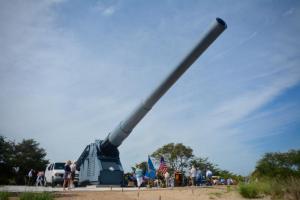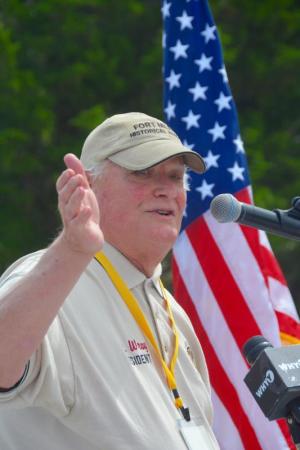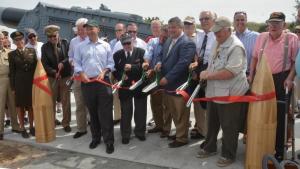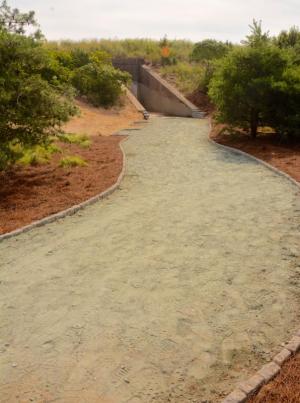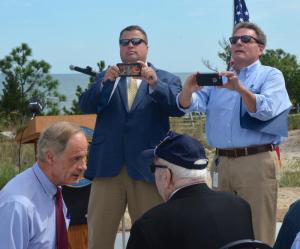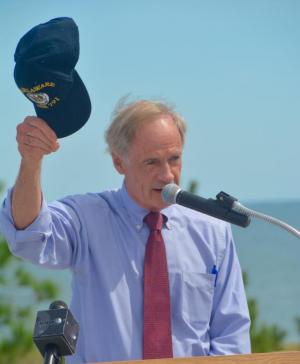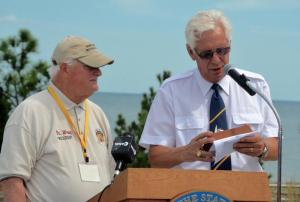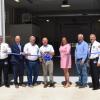In shadow of Missouri gun, Fort Miles artillery park opens
In what at one time seemed like a “Mission Impossible,” Fort Miles Historical Association volunteers celebrated the culmination of their dream – an artillery park showcased with a gun barrel from one of the most noted ships in U.S. history.
Under the shadow of the 66-foot-long USS Missouri barrel, volunteers joined with dignitaries and state officials Sept. 2 to officially dedicate the Fort Miles World War II Artillery Park of 10 guns, connected by a trail among the dunes and pines of Cape Henlopen State Park.
It was 71 years ago to the day that the Japanese army surrendered under that same barrel onboard the Missouri in Tokyo Bay, ending World War II.
Among the dignitaries attending the ceremony was Bob Saupee of Reading, Pa., who was an 18-year-old sailor on the upper deck of the USS Missouri witnessing the surrender ceremony.
The 16-inch gun barrel – similar to two large guns that were housed in Fort Miles bunkers – is designed as the showcase to the entrance of a planned World War II museum.
Gov. Jack Markell said most people would look at the task of transporting the Missouri barrel from Norfolk to Fort Miles and give up. “But that's not your attitude,” he told the volunteers.
The barrel was just days away from being cut up for scrap. Through a plan written by the association and Department of Natural Resources and Environmental Control, the barrel was donated by the U.S. Naval Systems Command to the state's Division of Parks and Recreation.
The barrel arrived amid fanfare in April 2012 via barge, railcar and eventually truck.
DNREC Secretary David Small called the park a place where memories are made, as well as a place where natural beauty mixes with the history of Fort Miles.
“You have put new life into a place that played such a vital role in World War II,” Small said.
Fort Miles Historical Association President Gary Wray, a member of a team of four who in 2003 put the restoration wheels in motion, said dedicated Bunker Buster volunteers put in 14,000 volunteer hours in 2015 and will top that number this year. “We are a pushy bunch, but we get stuff done,” Wray said. “This project has been a total team effort.”
The association raised $430,000 to fund the artillery park, including more than $113,000 to transport the Missouri gun barrel.
Next on the agenda is the completion of a state-of-the-art World War II museum in Battery 519 adjacent to the artillery park and the Missouri gun barrel. A fall kickoff event is planned to launch a $2.1 million capital campaign.
Fort Miles was the largest East Coast combat-ready post during World War II, with 2,500 personnel trained to protect the coast and the entrance to the Delaware Bay and Delaware River. Fort Miles had 32 of the Army's largest-caliber artillery pieces plus anti-aircraft weapons. It continued to serve in military capacities for another three decades until more than 540 acres of the area were returned to the state of Delaware, forming the heart of Cape Henlopen State Park.












